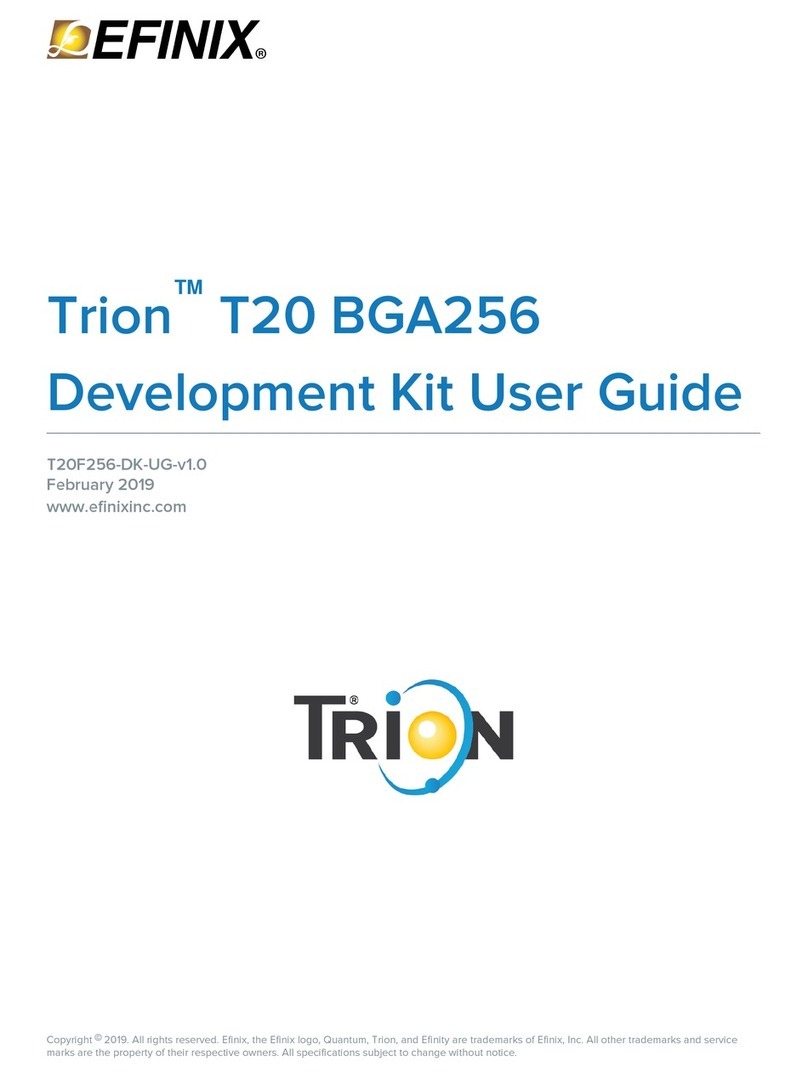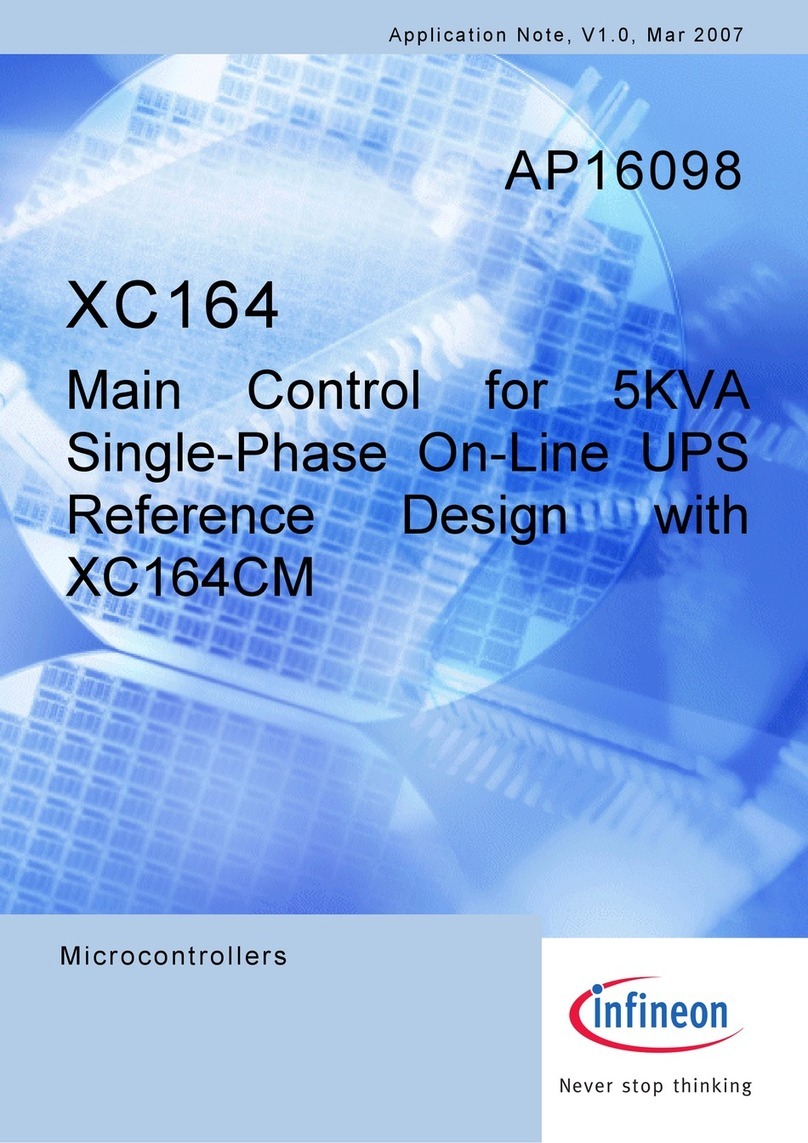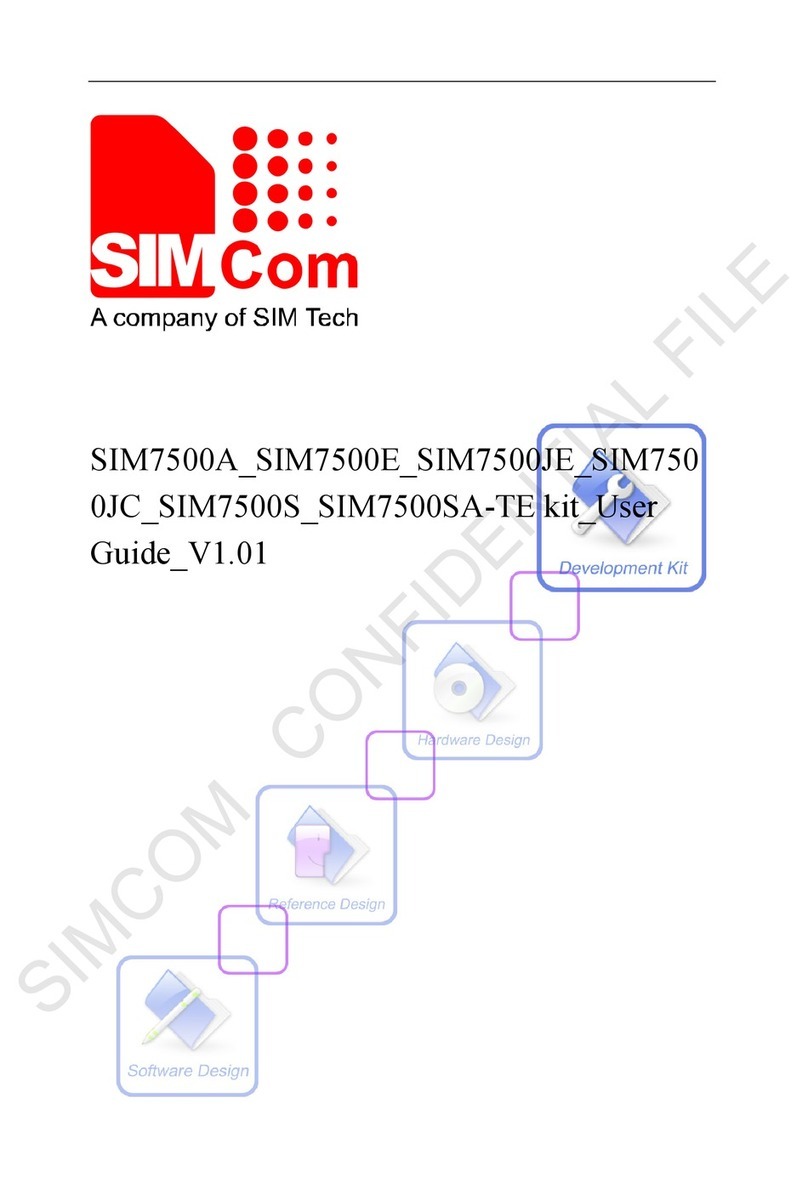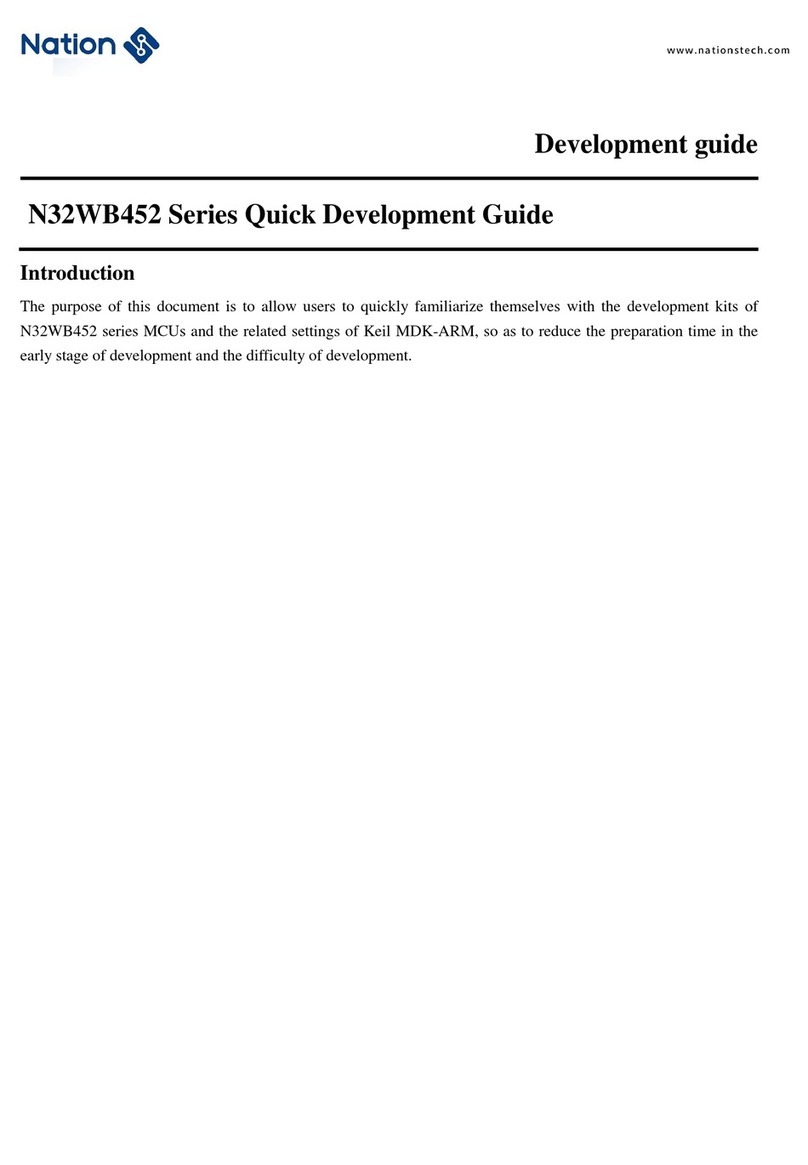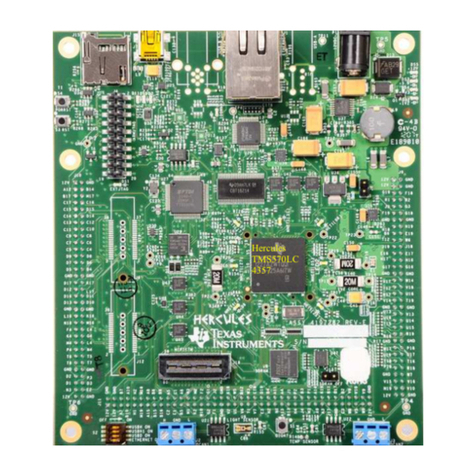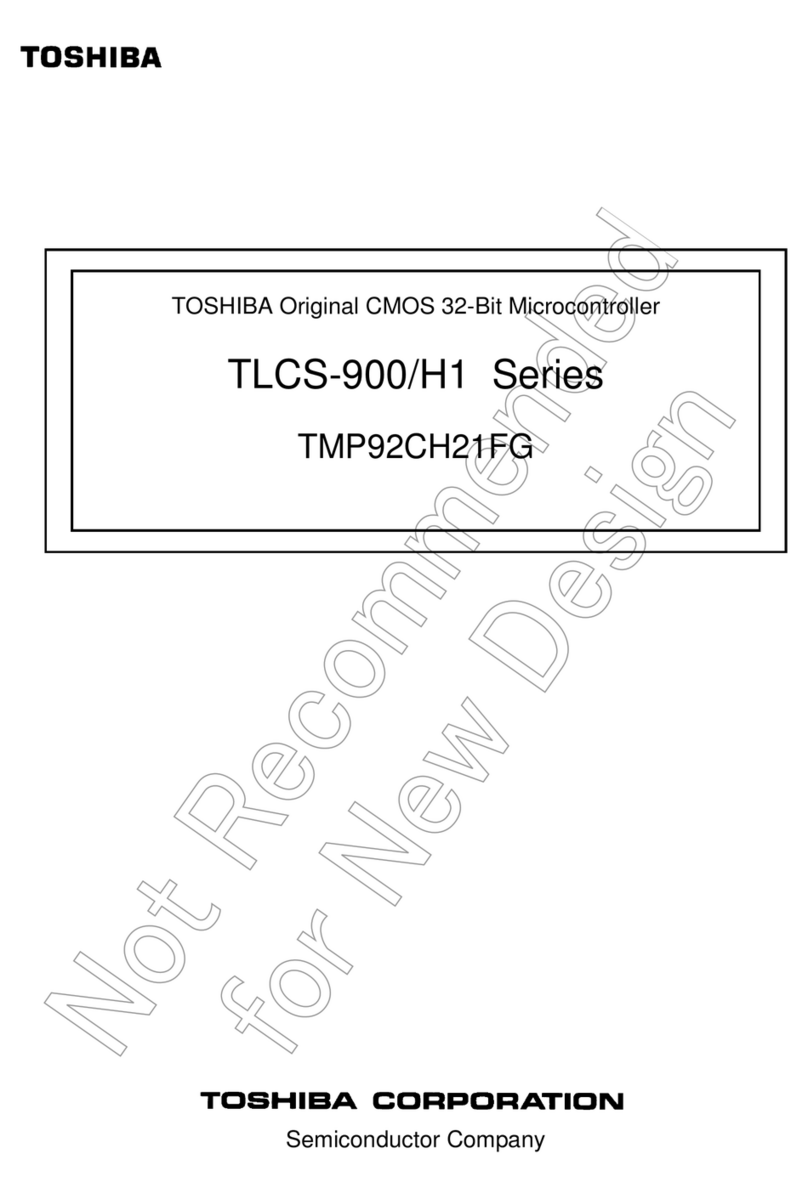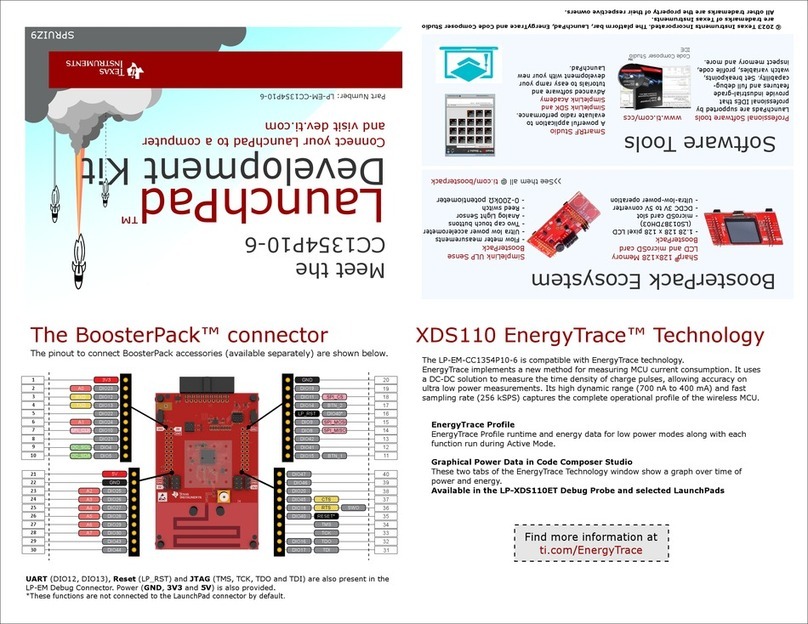ETC EVF720FG739C User manual

1. PICTURE TUBE
Size : 17 inch (Flat Slot Mask)
DefIection Angle : 90°
Neck Diameter : 29.1 mm
Phosphor : P22
Slot Pitch : 0.24 mm
Low Radiation : TCO-99
Face Treatment : W-ARASC (Anti-Reflective and
Anti-Static Coating),
Internal Anti-Glare
2. SIGNAL
2-1. Horizontal & Vertical Sync
1) Input Voltage Level: Low= ≤0.8V, High= ≥2.1V
2) Sync Polarity : Positive or Negative
2-2. Video Input Signal
1) Voltage Level : 0~0.7 Vp-p
a) Color 0, 0 : 0 Vp-p
b) Color 7, 0 : 0.467 Vp-p
c) Color 15, 0 : 0.7 Vp-p
2) Input Impedance : 75 Ω
3) Video Color : R, G, B Analog
4) Signal Format : Refer to the Timing Chart
2-3. Signal Connector
15 Pin D-Sub Connector
2-4. Scanning Frequency
Horizontal : 30~95 kHz
Vertical : 50~160 Hz
3. POWER SUPPLY
3-1. Power Range
AC 100~240V (Auto Select), 50/60Hz, 2.0A Max.
3-2. Power Consumption
4. DISPLAY AREA
4-1. Active Video Area :
• Max Image Size - 325.4 x 244.1mm (12.81" x 9.61")
• Preset Image Size - 310 x 230 mm (12.20" x 9.06")
4-2. Display Color : Full Colors
4-3. Display Resolution : 1600 Dots x 1200Lines
4-4. Video Bandwidth : 203 MHz
5. ENVIRONMENT
5-1. Operating Temperature: 10°C~35°C (50°F~95°F)
(Ambient)
5-2. Relative Humidity : 8%~80%
(Non-condensing)
5-3. Altitude : 10,000 ft
6. DIMENSIONS (with TILT/SWIVEL)
Width : 415.0 mm (16.34")
Depth : 439.0 mm (17.28")
Height : 435.0 mm (17.13")
7. WEIGHT (with TILT/SWIVEL)
Net Weight : 19.2 kg (42.33 lbs)
Gross Weight : 22.7 kg (50.05 lbs)
SPECIFICATIONS
- 2 -
MODE
NORMAL (ON)
STAND-BY
SUSPEND
OFF
H/V SYNC
ON/ON
OFF/ON
ON/OFF
OFF/OFF
POWER CONSUMPTION
less than 130W
less than 8W
less than 8W
less than 3W
LED COLOR
GREEN
AMBER
AMBER

TIMING CHART
- 4 -
<< Horizontal Frequency (kHz), Vertical Frequency (Hz), Horizontal etc... (µs), Vertical etc... (ms) >>
1
2
3
4
5
6
7
8
9
H + 46.875 K 1.616 21.333 16.162 0.323 3.232 5.172
V + 75.000 H 0.064 13.333 12.800 0.021 0.448 0.533
H – 31.469 K 3.813 31.778 25.422 0.636 1.907 6.356
V – 59.940 H 0.064 16.683 15.253 0.318 1.048 1.430
H – 48.363 K 2.092 20.677 15.754 0.369 2.462 4.923
V – 60.004 H 0.124 16.666 15.880 0.062 0.600 0.786
H + 60.023 K 1.219 16.660 13.003 0.203 2.235 3.657
V + 75.029 H 0.050 13.328 12.795 0.017 0.466 0.533
H – 37.500 K 2.032 26.667 20.317 0.508 3.810 6.349
V – 75.000 H 0.080 13.333 12.800 0.027 0.427 0.533
H + 79.976 K 1.067 12.504 9.481 0.119 1.837 3.022
V + 75.025 H 0.038 13.329 12.804 0.013 0.475 0.525
H + 37.879 K 3.200 26.400 20.000 1.000 2.200 6.400
V + 60.317 H 0.106 16.579 15.840 0.026 0.607 0.739
H – 31.469 K 3.810 31.780 25.420 0.640 1.906 6.356
V + 70.082 H 0.064 14.270 12.710 0.413 1.080 1.557
H + 93.750 K 0.948 10.667 7.901 0.316 1.501 2.765
V + 75.000 H 0.032 13.333 12.800 0.011 0.491 0.533
800x600
75Hz
640x480
60Hz
1024x768
60Hz
1024x768
75Hz
640x480
75Hz
1280x1024
75Hz
800x600
60Hz
720x400
70Hz
1600x1200
75Hz
Mode
H/V
Sort Sync
Polarity
Frequency Sync Duration
(E) Total Period
(D) Video Active
Time (A) Front Porch
(C) Back Porch
(F) Blanking Time
(B)
Resolution

CONTROL LOCATIONS
- 8 -
No.
1
2
3
4
5
No.
6
7
8
9
10
Ref. No.
SW131
Ref. No.
VR901
SW701
VR701
Control Function
POWER SWITCH
SET BUTTON
OSD SELECT/ADJUSTMENT (RIGHT)
OSD SELECT/ADJUSTMENT (DOWN)
OSD SELECT/ADJUSTMENT (UP)
Control Function
OSD SELECT/ADJUSTMENT (LEFT)
OSD BUTTON
B+ADJUSTMENT
RASTER CENTER SELECT
HIGH-VOLTAGE ADJUSTMENT

DISASSEMBLY
- 10 -
(a)
(a)
3. TOP SHIELD REMOVAL
1) Remove two screws (a).
2) Remove four screws (b).
3) Remove four screws (c).
4) Remove two screws (d).
2. BACK COVER REMOVAL
1) Remove four screws (a) from the Back
Cover.
2) Slide the Back Cover away from the Front
Cabinet of the monitor.
(a)
(b)
(b)
(b)
(b)
(d)
(d)
(c)
(c)
(c)
(c)
(a)
(a)
1. TILT/SWIVEL REMOVAL
1) Set the monitor face downward.
2) Pressing the latch (a), carefully remove
the Tilt/Swivel by pulling it upward.

- 11 -
(a)
(a)
(a)
(a)
4. TOTAL CHASSIS ASSEMBLY REMOVAL
1) Disconnect P901 (Degaussing pin),
P701 (DY pin), P202 (Tilt pin), and
P201 (Purity pin) from the Main PCB.
2) Disconnect P308 (GND Wire),
P304, P304 from the Video PCB.
3) Carefully separate the CDT Board
Assembly from the CDT neck.
4) Discharge the remaining static
electricity by shorting between
the Anode Cap and the CDT ground.
5) Disconnect the Anode Cap
from the CDT.
6) Remove four screws (a).
7) Remove the Total Chassis Assembly
from the Main Frame.
5. CONTROL PCB ASSEMBLY REMOVAL
1) Remove three screws (a).
2) Remove the control PCB Assembly from
the Front cabinet.
(a)
(a) (a)

- 12 -
6. BOTTOM BRACKET REMOVAL
1) Remove four screws (a).
2) Remove the Bottom Bracket.
(a)
(a)
(a) (a)
Bottom Bracket
Main Bracket
(d)
(d)
(a)
(a)
(a)
(a)
(a)
(a)
(a)
Main Bracket
7. MAIN BRACKET REMOVAL
1) Remove eight screws (a).
2) Release four latches (d) from the Main Board
Assembly.
3) Remove the Bottom Bracket.

ADJUSTMENT
- 16 -
GENERAL INFORMATION
All adjustment are thoroughly checked and corrected
when the monitor leaves the factory, but sometimes
several adjustments may be required.
Adjustment should be following procedure and after
warming up for a minimum of 30 minutes.
• Alignment appliances and tools.
- IBM compatible PC.
- Programmable Signal Generator.
(eg. VG-819 made by Astrodesign Co.or equivalent)
- EPROM or EEPROM with saved each mode data.
- Alignment Adaptor and Software.
- Digital Voltmeter.
- White Balance Meter.
- Luminance Meter.
- High-voltage Meter.
AUTOMATIC AND MANUAL DEGAUSSING
The degaussing coil is mounted around the CDT in order
for automatic degaussing when turn on the monitor. But
a monitor is moved or faced in a different direction,
become poor color purity cause of CDT magnetized, then
press
(DEGAUSSING) on the OSD menu.
ADJUSTMENT PROCEDURE & METHOD
-Install the cable for adjustment such as Figure 1and run
the alignment program on the DOS for IBM compatible PC.
1. Adjustment for B+ Voltage.
1) Display cross hatch pattern at Mode 8.
2) Adjust C913 (+) voltage to 190±0.2V with VR901.
2. Adjustment for High-Voltage.
1) Display cross hatch pattern at Mode 8.
2) Adjust CDT Anode voltage to 26±0.2kV with
VR701.
3. Adjustment for Horizontal Raster Center.
1) Display cross hatch pattern at Mode 8.
2) Adjust the raster should be center of the screen with
SW701.
4. Adjustment for Factory Mode (Preset Mode).
1) Display cross hatch pattern at Mode 1.
2) Run alignment program for EVF720 on the IBM
compatible PC.
3) EEPROM → ALL CLEAR → Y(Yes) command.
4) DIST. ADJ.
5) COMMAND →PRESET START→Y(Yes) command.
6) Adjust tilt as arrow keys to be the best condition.
7) DIST. ADJ. → BALANCE command.
8)
Adjust balance of pin balance, key balance, Top
corner correction and Bottom corner correction as
arrow keys to be the best condition.
9)
DIST. ADJ. → FOS. ADJ command.
10)
Adjust H-SIZE as arrow keys to 310
±
2mm.
11)
Adjust H-POSITION as arrow keys to center of the
screen.
12)
Adjust V-SIZE as arrow keys to 230
±
1mm.
13)
Adjust V-POSITION as arrow keys to center of the
screen.
14)
Adjust S-PCC (Side-Pincushion) as arrow keys to
be the best condition.
15)
Adjust TRAPEZOID as arrow keys to be the best
condition.
16)
Adjust TILT as arrow keys to be the best condition
17)
Display from Mode 2) to Mode 9).
18) Repeat 10) To 15).
19)
PRESET EXIT → Y (Yes) command.
5. Adjustment for White Balance and Luminance.
1) Set the White Balance Meter.
2) Press the (DEGAUSSING) on the OSD menu for
demagnetization of the CDT.
3) Display color 0,0 pattern at Mode 8.
4) Set Brightness and Contrast to max position.
5) COLOR ADJ. → BIAS ADJ. command of the
alignment program.
6) Check whether blue color or not at R-BIAS and G-
BIAS to min position and B-BIAS to 127 (decimal)
position at Sub-Bright Max. If it's not blue color, the
monitor must be repaired.

- 17 -
Figure 1. Cable Connection
7) Adjust Screen control on the FBT to 0.15±0.02FL of
the raster luminance.
8) Adjust R-BIAS and G-BIAS command to x=0.283±
0.006 and y=0.298±0.006 on the White Balance
Meter with PC arrow keys.
9) Adjust SUB-Brightnesscommand to 0.40~0.50FL of
the raster luminance.
10)
Display color 15,0 box pattern (70x70mm) at Mode 8.
11)
DRIVE ADJ command.
12)
Set SUB-CONTRAST to 200 (decimal).
13)
Set B-DRIVE to 150 (decimal) at DRIVE of the
alignment program.
14)
Adjust R-DRIVE and G-DRIVE command to white
balance x=0.283±0.003 and y=0.298±0.003 on the
White Balance Meter with PC arrow keys.
15)
Adjust SUB-CONTRAST command to 55±1FL of
the box pattren (70x70 mm).
16)
Display color 15,0 full white patten at Mode 8.
17)
COLOR ADJ. → LUMINANCE → ABL command.
18)
Set the Brightness and Contrast to max position.
19)
Adjust ABL to 35±1FL of the luminance.
20)
Exit from the program.
6. Adjustment for Focus.
1) Display H character in full screen at Mode 8.
2) Adjust two Focus control on the FBT so that focus
should be the best condition.

TROUBLESHOOTING GUIDE
- 18 -
1. NO POWER
NO POWER
(POWER INDICATOR OFF)
TROUBLE IN
D901
TROUBLE IN
FUSE (F901)
TROUBLE IN
IC903
TROUBLE IN
D906, D907, D908,
D909, D911, D912,
D920
TROUBLE IN
IC905
CHECK
FUSE OK?
CHECK
C907 (+) VOLTAGE?
140Vdc (AC=100V)
310Vdc (AC=220V)
NO
YES
YES
YES
NO
NO
NO
CHECK
IC903 PIN 3
WAVEFORM COME
OUT?
CHECK
D906, D907, D908,
D909, D911, D912, D920
VOLTAGE?
TROUBLE IN
IC901
CHECK
IC901 PIN 3
WAVEFORM COME
OUT?
YES
NO
YES

- 19 -
2. NO CHARACTER
CHECK
IC302 PIN 3, 8,12 (12V),
PIN 17 (5V)?
CHECK
IC302 PIN 2, 6,11 ?
CHECK
IC302 PIN 29, 32, 35 ?
TROUBLE IN
P302,
5V, 12V LINE
TROUBLE IN
PC SIGNAL,
SIGNAL CABLE
TROUBLE IN
IC302
TROUBLE IN
CDT SOCKET
NO
YES
NO
NO
YES
YES
CHECK
R, G, B CATHODE
VOLTAGE?
TROUBLE IN
IC303
NO
YES
NO CHARACTER

- 20 -
3. NO RASTER
NO VIDEO
(POWER INDICATOR
GREEN or ORANGE)
CHECK
POWER INDICATOR
GREEN or ORANGE ?
CHECK
SCREEN CONTROL
KNOB OF FBT
CHECK
VOLTAGE AT
D912 CATHODE (190V)
D909 CATHODE (85V)
IC911 OUT (12V)
D906 CATHODE
(6.3V)?
CHECK
IC401 (MICOM) PIN 11
5V (HIGH), IC701 PIN 10
12V (HIGH)?
ROTATE SCREEN
CONTROL KNOB TO
CLOCKWISE
TROUBLE IN
IC401 (MICOM),
IC701
TROUBLE IN
CDT SOCKET, BOARD
TROUBLE IN PRIMARY
CIRCUIT OF T901
TROUBLE IN
P302 SIGNAL CABLE
ORANGE
MIN.
(Counter-clockwise)
GREEN
OK
YES
NO
YES
NO

- 21 -
4. NO VERTICAL DEFLECTION
NO V-DEFLECTION
(ONE HORIZONTAL LINE)
CHECK
IC601 PIN 2 (15V) ?
CHECK
IC601 PIN 4
(-12V)?
TROUBLE IN
T901 PIN 15
TROUBLE IN
T901 PIN 16
TROUBLE IN
IC601, V-CIRCUIT
NO
NO
YES
YES
CHECK
IC701 PIN 12, 13
(SAWTOOTH WAVE)? TROUBLE IN
IC701
NO
YES

- 22 -
5. TROUBLE IN DPM
CHECK
IC401 (MICOM)
PIN 8, 9 (H/V INPUT)
SIGNAL?
CHECK
IC401 PIN 13, 14
WAVEFORM?
CHECK
IC401 PIN 11
(5V, HIGH)?
CHECK
IC401 PIN 5, 19 ?
CHECK PC,
(PC IS NOT GOING INTO
DPM MODE)
TROUBLE IN
X401, IC401
TROUBLE IN
IC401
TROUBLE IN
IC401
TROUBLE IN
T901 or PC
NO H / V SYNC SIGNAL
INPUT H/V SYNC
NO
NO
NO
DPMS TABLE
Mode Item
NORMAL
STAND-BY
SUSPEND
OFF
H / V SYNC
ON / ON
OFF / ON
ON / OFF
OFF / OFF
LED
GREEN
AMBER
AMBER
AMBER
VIDEO
NORMAL
OFF(0V)
OFF(0V)
OFF(0V)
YES
YES
CHECK
B+ LINE
(12V, 15V, 80V,
5V) ?
TROUBLE IN
IC911
NO
YES
STAND-BY/SUSPEND/
OFF MODE FAILURE

- 23 -
6. NO DEGAUSSING
CHECK
IC401 PIN 20
(5V)?
CHECK
Q908 COLLECTOR
VOLTAGE
(0.5V)?
CHECK
P903?
CHECK
RL901?
TROUBLE IN
IC401 (MICOM)
TROUBLE IN
D914
TROUBLE IN
P901
TROUBLE IN
RL901
TROUBLE IN
TH901,
DEGAUSSING COIL
NO DEGAUSSING ( BUTTON MUST BE PRESSED.)
NO
NO
NO
NO
YES
YES
YES
YES

- 24 -
7. NO TILT (ROTATION)
TROUBLE IN P202,
TILT COIL CONNECTOR,
TILT COIL
NO TILT (ROTATION)
TROUBLE IN
D913
TROUBLE IN
Q202, Q208, Q205, Q204
CHECK
R213 VOLTAGE
(12V)?
NO
YES
YES
CHECK
Q202, Q208,
Q205, Q204 ? NO
TROUBLE IN
IC401
YES
CHECK
IC401 ? NO

- 25 -
8. TROUBLE IN OSD
CHECK
IC301 PIN 5
(NEGATIVE H-PULSE
COMES IN ?)
CHECK
IC301 PIN 18
(NEGATIVE V-PULSE
COMES IN?)
CHECK
IC301 PIN 8, 7
(IS THERE ANY SIGNAL
WHEN OPERATING FRONT
CONTROL ?)
NO OSD
TROUBLE IN
IC302
TROUBLE IN
P302
TROUBLE IN
P302
TROUBLE IN
IC301, IC401
YES
YES
YES
NO
NO
NO
CHECK
IC301 PIN 4, 17
(5V) ?
TROUBLE IN
P302
NO
YES

BLOCK DIAGRAM
- 13 -

DESCRIPTION OF BLOCK DIAGRAM
- 14 -
1. Line Filter & Associated Circuit.
This is used for suppressing noise of power input line
flowing into the monitor and/or some noise generated
in this monitor flowing out through the power input
line.
That is to say, this circuit prevents interference
between the monitor and other electric appliances.
2. Degauss Circuit & Coil.
The degauss circuit consists of the degaussing coil,
the PTC (Positive Temperature Coefficient) thermistor
(TH901), and the relay (RL901). This circuit eliminates
abnormal color of the screen automatically by
degaussing the slot mask in the CDT when turn on the
power switch.
When you need to degauss while using the monitor,
select DEGAUSS on the OSD menu.
3. SMPS (Switching Mode Power Supply).
This circuit works with power of 110-240Vac
(50/60Hz).
The operation procedure is as follows:
1) AC input voltage is rectified and smoothed by
the bridge diode (D901) and the capacitor (C907).
2) The rectified voltage (DC voltage) is applied to the
primary coil of the transformer (T901).
3) The control IC (IC901) generates switching pulse
to turn on and off the primary coil of the
transformer (T901) repeatedly.
4) Depending on the turn ratio of the transformer, the
secondary voltages appear at the secondary coil of
the transformer (T901).
5) These secondary voltages are rectified by each
diode (D906, D907, D908, D909, D910, D911,
D912, D913) and operate the other circuits.
(Deflection, Video Amplifier, etc.)
4. Display Power Management Circuit.
This circuit control power consumption of the monitor
by detecting H and V sync signal. There are stand-by
and suspend mode. When no horizontal or vertical
sync signal input, the circuit consists of Q930 and
Q931 becomes stand-by and suspend mode. It’s
power consumption is below 8W. When no horizontal
and vertical sync signal input, it’s power consumption
is below 3W.
5. X-ray Protection.
This circuit detects the rectified DC voltage comes
from the FBT pin 4. If the high voltage of the FBT
reaches up to about 30kV (abnormal state),
Micom(IC401) detects. It stops B+voltage supplied to
the FBT (T701), and high voltage is not be generated,
(In the normal state, the high voltage is about 26kV.)
6. Micom(Microprocessor) Circuit.
The operating procedure of Micom (Microprocessor)
and its associated circuit is as follows:
1) H and V sync signal is supplied from Signal Cable to the
Micom (IC401).
2) The Micom (IC401) distinguishes polarity and
frequency of HandV sync.
3) The Micom controls each OSD function signals.
(H-size, H-position, V-size, etc.)
4) The controlled data of each mode is stored in IC402.
User can adjust screen condition by each OSD
function. The data of the adjust screen condition is
stored automatically.
7. Horizontal and Vertical Synchronous Processor.
This circuit generates the horizontal drive pulse and
the vertical drive pulse by taking sync-signal from
Signal Cable. This circuit consists of the
TDA4856(IC701) and the associated circuit.
8. D/D (DC to DC) Converter.
This circuit supplies DC voltage to the horizontal
deflection output circuit by decreasing DC 190V which
is the secondary voltage of the SMPS in accordance
with the input horizontal sync signal.
9. D/D Drive & Convert Circuit.
This circuit is used for supplying B+voltage to
horizontal deflection output transistor (Q708). This
circuit makes to add side-pincushion correcting signal
to B+voltage.
10. Horizontal Deflection Output Circuit.
This circuit makes the horizontal deflection by
supplying the saw-tooth current to the horizontal
deflection yoke.

- 15 -
11. High Voltage Output & FBT (Flyback Transformer).
The high voltage output circuit is used for generating
pulse wave to the primary coil of the FBT (Flyback
Transformer (T701)). A boosted voltage (about 26kV)
appears at the secondary of the FBT and it is supplied
to the anode of the CDT.
And there are another output voltages such as the
dynamic focus voltage.
12. H-Linearity Correction Circuit.
This circuit corrects the horizontal linearity for each
horizontal sync frequency.
13. Vertical Output Circuit.
This circuit takes the vertical wave from the TDA4856
(IC701) and performs the vertical deflection by
supplying the saw-tooth wave current from the
TDA8172 (IC601) to the vertical deflection yoke.
14. Dynamic Focus Output Circuit.
This circuit takes H and V parabola wave from the
TDA4856 (IC701), and amplifies these waves to offer
to the FBT (T701).
15. Vertical Blanking and Brightness Control.
This circuit eliminates the retrace line by supplying a
negative pulse to the G1 of the CDT. The brightness
control circuit is used to control brightness of the
screen by changing the DC level of G1.
16. Image Rotation (Tilt) Circuit.
This circuit corrects the tilt of the screen by supplying
the image rotation signal to the tilt coil which is
attached to the CDT near the deflection.
17. Static Convergence Control Circuit.
This circuit corrects the convergence of the screen by
supplying the convergence signal to the 4H (STC) coil
which is attached to the CDT near the deflection.
18. Moiré Reduction Circuit
This circuit reduce interference between the periodical
display pattern and the CDT's slot (or dot).
The positions of every other one dot video signal
beams (red, green, and blue beam) are shifted finely,
thus reducing interference.
19. OSD Circuit.
This circuit is used for performing the OSD (On-
Screen- Display) function.
When a user selects the OSD Select/Adjustment
control, the adjustment status displays on the screen.
20. Video Pre-Amp Circuit.
This circuit amplifies the analog video signal from 0-
0.7V to 0-4V. This circuit is operated by taking the
clamp, R, G, B drives, and contrast signals from the
Micom (IC401).
21. Video Output Amp Circuit.
This circuit amplifies the video signal which comes
from the video pre-amp circuit and amplified video
signal is applied to the CDT cathode.

WIRING DIAGRAM
- 9 -
Table of contents


